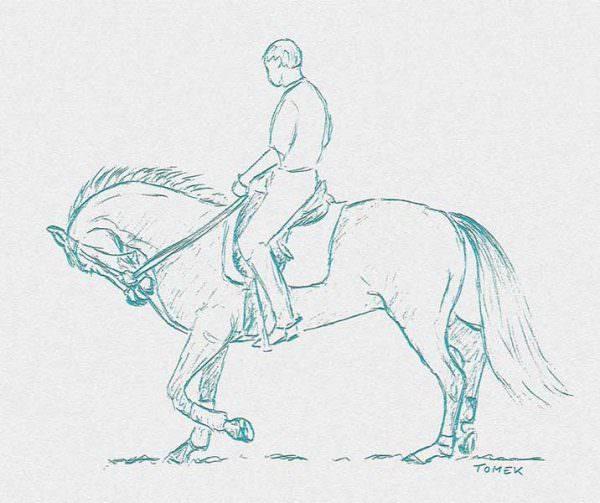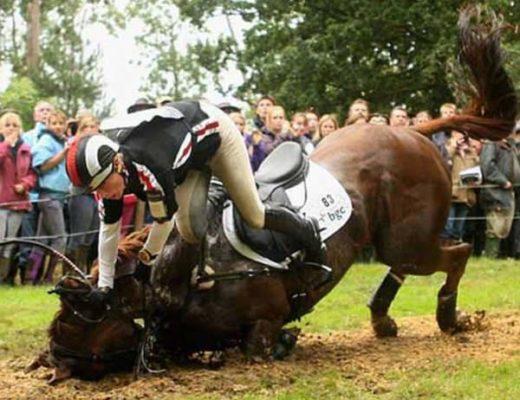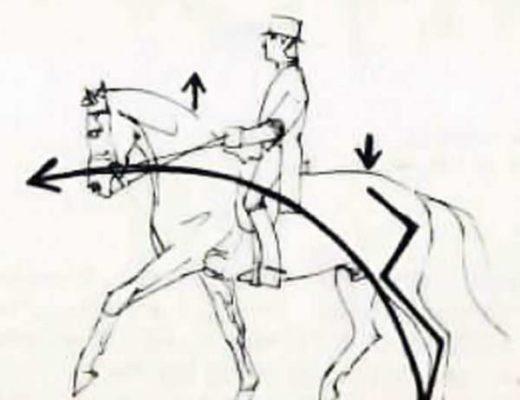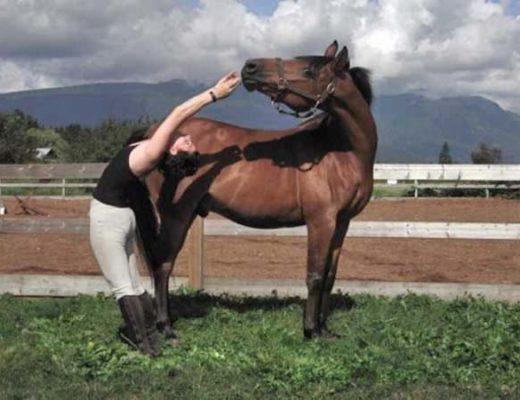This question is raised frequently – how to soften and flex a horse who is stiff in the neck. There is a problem with the question however, because it assumes that addressing the horse's stiff neck will actually correct the stiffness. In reality, flexing the horse's neck alone only causes a disconnection between the neck and the hind legs. If you do not understand the implications of this disconnection you can create more problems later on – making it difficult or impossible to get true collection from the horse.
Also, attempting to take control over the horse's neck stiffness and creating disconnection, you are setting yourself up for needing more aids and cues to control his movements later on.
The reason allowing the horse's neck stiffness to continue without direct address is because it is a barometer. If you work the horse correctly through the rest of his body, he moves genuinely forward (not just fast or rushing around but honestly pushing from the hind and engaging), you use the half-halt often and correctly, are quiet with your independent aids, balanced in the seat and have hands which are light – the neck will become supple on its own.
When I began riding my instructor required I practice constant flexions with my horse – every minute of every ride, and supposedly they evolved at some point to create natural collection in the horse. I certainly had a horse who was instantly supple in the neck and who was adept at moving side to side without balance. Collection never genuinely came and over time directing his movements became more difficult because he was always avoiding contact with the reins and behind the bit. He was also never genuinely forward – a HUGE gap in training.
It is possible to retrain horses who have been over-flexed, but it is a longer process than simply being aware that flexing the neck is not necessary and damages the horse's future potential.
So many popular trainers and clinicians stress the importance of creating a horse with a soft mouth, supple neck – one who never pulls against the riders or braces. The truth however is that if the rider's seat is balanced, their aids independent of one another and their hands educated to be light, tactile and non-interfering; none of those problems harped on by clinicians exist. When you lack balance and lean on the horse he will lean back and try to pull your reins away. When your aids conflict and overlap one another the horse will protest with his whole body, including his neck and mouth. When your hands are rough, heavy, insensitive, the horse will become defensive and brace against you.
So, my answer to “how do you make a horse's stiff neck turn supple” is always turned to the rider. Take Classically based seat lessons on the lunge line where you learn to ride at every gait in balance without the stirrups or reins. Learn properly how to apply the legs and use the half halt (see the Simplicity of the Aids : Part I & Part II). Utilize only ONE aid at a time so you do not interfere with the horse or use conflicting aids.








I find a leading and or open rein is very beneficial to a horse that has learned to evade. The rider has to be good at stretching their arm so the horse can find its whole neck again. (The rider gets to feel some idea of the discomfort the horse has felt from being jammed up). I have sometimes reached as far forward as to be in line with their mouth, as if I were on the ground (almost exactly like leading it). Once the horse feels contact that does not restrict but instructs, they start accepting my hands in a more conventional position because they realize my contact is permitting them to use their neck.
Using heavy to make light is to me like using a meat tenderizer to soften a bad cut of meat.